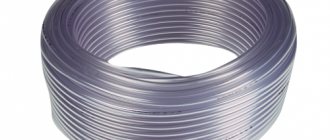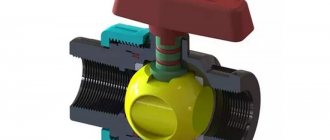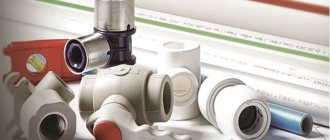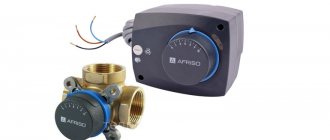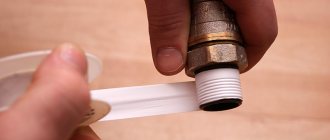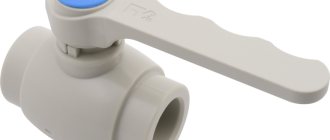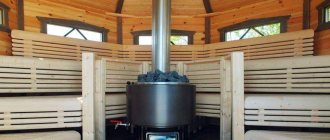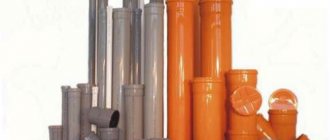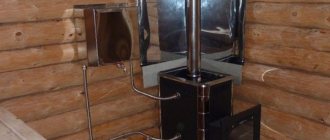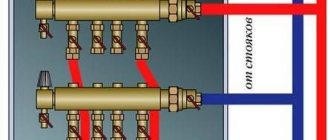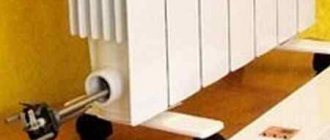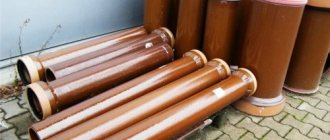In many areas of human activity there is a need to create movable hydraulic and pneumatic systems operating at high pressure. For this purpose, very strong hoses are used with their walls reinforced with one or several layers of braiding made of durable reinforcing materials. To install these systems, special adapters and connectors are used - fittings for high pressure hoses. We bring to the attention of our dear reader an introductory article about this type of connector.
What it is
Fitting is a connecting element of a pipeline. A fitting for high-pressure hoses is an integral part of the hydraulic system; it is necessary for connecting hoses to a hydraulic or pneumatic system, turning, switching to another type of pipeline and another diameter, branching, if necessary, frequent connection and dismantling, blocking the movement of the working medium along the hose. Such system elements can withstand high pressure and ensure safe operation of the entire system.
Products for high pressure hoses are made of steel with anti-corrosion coating, non-ferrous metals and their alloys, and stainless steel.
These type devices consist of a connecting part (usually looks like a thread or coupling with an internal thread and is generally similar to other types of connectors) and a shank on which the hose is attached.
SAE JIC 37°
These fittings are often simply referred to as JIC. They have a socket (reverse cone) with an angle of 37°, sealing occurs according to the “metal-to-metal” principle, straight UNF thread. The original design specification for these fittings was developed by the Society of Automotive Engineers (SAE). These fittings have become the most common American standard fittings in Europe.| DN | Thread | Diameter A, mm | Diameter B, mm |
| 06 | 3/8-24 | 8.6 | 9.5 |
| 06 | 7/16-20 | 10.0 | 11.1 |
| 08 | 1/2-20 | 11.6 | 12.7 |
| 10 | 9/16-18 | 13.0 | 14.3 |
| 12 | 3/4-16 | 17.6 | 19.1 |
| 16 | 7/8-14 | 20.5 | 22.2 |
| 20 | 1.1/16-12 | 24.6 | 27.0 |
| 25 | 1.3/16-12 | 28.3 | 30.1 |
| 25 | 1.5/16-12 | 31.3 | 33.3 |
| 32 | 1.5/8-12 | 39.2 | 41.3 |
| 38 | 1.7/8-12 | 45.6 | 47.6 |
| 50 | 2.1/2-12 | 61.5 | 63.5 |
Scope of application
High-pressure hoses are used to transport fuel, lubricants, water emulsions, and to transmit working force in hydraulic systems using liquid. RVD is also used for working with liquids of thick consistency.
The scope of application of fittings for high-pressure hoses coincides with the scope of application of the high-pressure hoses themselves:
- Industrial power and conveying hydraulic and pneumatic equipment.
- For supplying compressed air, steam, hot water.
- Transport - from cars to carriages and locomotives, airplanes and ships.
- Construction and mining equipment - cranes, loaders, bulldozers, excavators, motor graders.
- Road cars.
- Agricultural machinery.
- Ventilation systems.
- Food industry equipment.
- Lifting and transport equipment.
- Particular attention should be paid to the mining industry.
They are used from low negative temperatures (-55°C) to 100°C and even higher.
If you have not encountered the use of hoses with fittings in production, then you have probably seen how they use a jackhammer (from a compressor), perform welding using a welding machine, or pour fuel into cars - hoses and fittings are used everywhere. Cars also have a lot of hoses that operate under pressure.
Japanese fittings – JIS
JIS (Japanese Industrial Standard) fittings can be found on most Japanese equipment. They use a 30° seal seat and metric or BSPP threads. JIS fittings should be distinguished from BSP and JIC fittings. Sealing mechanism - 30° metal-to-metal sealing surface.| DN: JIS Komatsu | Thread | Diameter A, mm | Diameter B, mm |
| 06 | M12x1.5 | 12,0 | 10,5 |
| 06 | M14x1.5 | 14,0 | 12,5 |
| 06 | M16x1.5 | 16,0 | 14,5 |
| 08 | M16x1.5 | 16,0 | 14,5 |
| 10 | M14x1.5 | 14,0 | 12,5 |
| 10 | M16x1.5 | 16,0 | 14,5 |
| 10 | M18x1.5 | 18,0 | 16,5 |
| 12 | M18x1.5 | 18,0 | 16,5 |
| 12 | M20X1.5 | 20,0 | 18,5 |
| 12 | M22X1.5 | 22,0 | 20,5 |
| 12 | M24X1.5 | 24,0 | 22,5 |
| 16 | M24X1.5 | 24,0 | 22,5 |
| 16 | M27X1.5 | 27,0 | 25,5 |
| 20 | M30X1.5 | 30,0 | 28,5 |
| 20 | M33X1.5 | 33,0 | 31,5 |
| 25 | M33X1.5 | 33,0 | 31,5 |
| 32 | M36X1.5 | 36,0 | 34,5 |
| 38 | M42X1.5 | 42,0 | 40,5 |
| DN: JIS | Thread | Diameter A, mm | Diameter B, mm |
| 06 | M 14×1.5 | 12,5 | 14,0 |
| 10 | M18x1.5 | 16,5 | 18,0 |
| 12 | M22x1.5 | 20,5 | 22,0 |
| 16 | M27x2 | 25,0 | 27,0 |
| 20 | M27x2 | 25,0 | 27,0 |
| 25 | M33x2 | 31,0 | 33,0 |
| 32 | M42x2 | 40,0 | 42,0 |
| 38 | M50x2 | 48,0 | 50,0 |
| 50 | M60x2 | 58,0 | 60,0 |
| DN: JIS Toyota | Thread | Diameter A, mm | Diameter B, mm |
| 04 | 1/8-28 | 8,6 | 9,7 |
| 06 | 1/4-19 | 11,5 | 13,2 |
| 10 | 3/8-19 | 14,9 | 16,7 |
| 12 | 1/2-14 | 18,6 | 20,9 |
| 16 | 3/4-14 | 24,1 | 26,4 |
| 25 | 1″-11 | 30,3 | 33,2 |
| 32 | 1.1/4-11 | 38,9 | 41,9 |
| 38 | 1.1/2-11 | 44,9 | 47,8 |
| 50 | 2-11 | 56,7 | 59,6 |
You may also be interested in: How to determine the thread on a fitting?
Requirements and Standards
In the manufacture of hydraulic fittings, three standards systems are used:
- European DIN standard system corresponding to Russian GOST. Threads according to these standards are metric (some are cylindrical and occasionally conical).
- American SAE standard system based on measuring dimensions in inches (25.4 mm). The thread pitch is calculated by the number of turns per inch. The products are used on all American equipment.
- BSP - British Standard Pipe with cylindrical pipe threads, based on the inch system of units of measurement. This system is widely used in the pipe industry (we refer to almost all small-diameter pipes for plumbing systems in inches). Thread pitch is the number of threads per inch.
Sometimes, at the customer’s request, products with non-standard dimensions are manufactured according to the provided drawings.
Definition of thread type:
| Thread gauge | |
| Using a thread gauge, you can determine the number of threads per inch. Place the gauge against the thread, look at the thread against the light - this will help you make a more accurate measurement. | |
| Measuring with a caliper | |
| To measure the diameter of the thread, use a vernier caliper (the outer diameter is measured using the external thread, and the internal diameter is measured using the internal thread). | |
Advantages and disadvantages
Advantages of fittings for high pressure hoses:
- Withstands high pressure.
- Durable.
- High strength, they are resistant to hydraulic shocks and mechanical loads.
- Convenient installation.
- Sufficient chemical resistance, especially to petroleum products.
- Ability to work in high temperature range.
- High tightness.
Steel structures have a serious drawback - they are susceptible to corrosion.
Our production:
- 9999999999
- 0
- RUB
VIEW ALL
Today, the following types of flexible pipelines are used for hydraulic systems:
- with 1 layer of braid 1SN, 1SC;
- with 2 layers of braid 2SN, 2SC;
- with 3 layers of 3SK braid;
- with 4 layers of winding 4SP, 4SH;
- with 6 layers of winding R13, R15;
- frost-resistant 2SN, 2SC, 3SK, 4SH.
Sleeves are selected depending on where they are planned to be used and for what types of systems they are suitable.
Types and varieties
There are many varieties. First of all, fittings can be divided according to the type of shank:
- The universal Multifit is the familiar herringbone pattern. The majority (95%) of products are produced with just such a shank.
- Interlock - used for crimping the most reliable hoses with 4 or 6 windings (braids). The design of such shanks is more complex; it is necessary to use a crimp coupling and fitting of a compatible design (or better yet, from the same manufacturer).
- DK
DK – manufactured in accordance with Russian GOST 42705-81. Products according to this standard are the most common in the Russian Federation, as they have very low requirements for the quality of mating surfaces. The fitting (male thread) has an internal 37° cone, and the “nut” (female thread coupling) is manufactured with a spherical seal. The fitting is very versatile and is used by most manufacturers. Female thread connectors (“nut”) can be designed in 135° or 90° curved designs. The thread can be with different pitches - one, one and a half and two mm.
- DKI
DKI (or JIS-74) is carried out in accordance with GOST 42705-81. The fitting has an outer cone of 74°, the “nut” has an inner cone of 74°. The nuts are available in 135° and 90° bent designs.
- DKO
Type DKO is manufactured in accordance with the European standard DIN 20066/3861. They produce products in two series. DKOL is a light series, DKOS is a heavy series. The fitting and the “nut” have 24° cones, respectively, the fitting is internal, the “nut” is external. The design also includes a rubber seal in the form of a ring - this facilitates the installation of connectors and reduces surface requirements. “Nuts” have modifications with a bend of 135° and 90°. DKOL differs from DKOS in the diameter of the pipe on which they are mounted. There are product options with different threads.
- JIS
JIS (JIS-Toyota) – for their production the Japanese standard JIS B 8363 is used. Fittings are produced only of the “nut” type and with an internal cone of 60°. There is a hexagon on the nipple - this makes it easier to install the hose with such a fitting on a vehicle and prevents it from twisting. There are curved models - with an angle of 135° and 90°.
- JIC
Type JIC is manufactured in accordance with American standard SAE J516/J514. The fitting has an outer cone of 74°, the “nut” has an inner cone of 74°. “Nuts” with internal threads are available with bend angles of 45° and 90°. In catalogs, the cone angle is often given as 37°, but this is the angle between the axis and the mating surface of the fitting, the total value is 74°.
- BSP
BSP - manufactured in accordance with the English standard BS5200. The fitting has an internal cone of 60°, the “nut” with internal thread has an external cone of 60°. The nuts are available in 135° and 90° bent designs. One of the most common fittings with inch pipe thread.
- ORFS
ORFS – manufactured according to the American standard SAE J516/J1453. Fittings with any type of thread (external and internal) have flat sealing surfaces; for tightness, a rubber (or other material) seal is laid between the planes. “Nuts” are produced with bending angles of 135° and 90°. At the end of the fitting there is a protruding small fitting with an external thread for a rubber seal (ring).
- NKT
NKT is manufactured according to Russian standards. The fitting has an external conical metric thread in accordance with GOST 633-80. Designed for drilling hoses, sealing occurs when the thread of the fitting is deformed when tightened.
- BES
BES – made in accordance with DIN 2353 standard. Represents a smooth pipe. For installation, special nuts and rings are installed.
- BEL
BEL - manufactured according to DIN 2353 standard. Represents a smooth pipe. For installation, special nuts and rings are installed. BEL and BES differ slightly in wall thickness. Both of these types are found on older equipment.
- NPTF
NPTF - American standard SAE J516 is used. Union fittings have an external tapered thread. The profile angle at the apex is 60°, the inner cone is 60°. This makes it possible to compact with NPSM (by cones). During installation, compaction occurs along a cone or when the thread is deformed.
- SF
Type SF - flanged, manufactured according to the American standard SAE J518, complies with ISO/DIS 6161-1 and -2, E DIN ISO 12151-3. Developed for connecting hoses to hydraulic pumps. There is a light (SFL) and a heavy series (SFS). There is an O-ring between the flanges for sealing. The main bending angles of such connectors are 135° and 90°, additional ones are 120°, 150°, 157.5°. Some companies (Komatsu, CATERPILLAR) use their own types of flanges.
- Banjo
Banjo is a ring fitting. For fastening, a bolt is used, hollow inside - Banjo. The bolts are available in two types: with metric and inch pipe threads in accordance with the BSP standard. Banjos with metric bolts are made in accordance with the DIN 7642 standard. The bolt holes on the fittings are different, the fittings are called Banjo BSP and Banjo metric. When choosing a connection, you need to know exactly the diameters of the shank and hole.
- Stack
Steck is a fitting that is locked with a special lock; there is no thread on it. Connectors are manufactured in accordance with DIN 20043 / SAE J1467 standard. For sealing, a rubber seal is installed on the front part of the fitting in a special groove. After installation, the fitting is locked - the lock fits into a groove specially designed for the lock. Now this type of fittings has been replaced by quick-release connectors.
BSP Flat Seal
These fittings have parallel BSP threads, but the sealing surface is flat. Compaction occurs when the composite seal is pressed against a flat surface.| DN | Thread | Diameter A, mm |
| 04 | 1/8-28 | 8,6 |
| 06 | 1/4-19 | 11,5 |
| 10 | 3/8-19 | 14,9 |
| 12 | 1/2-14 | 18,6 |
| 16 | 5/8-14 | 20,6 |
| 20 | 3/4-14 | 24,1 |
| 25 | 1»-11 | 30,3 |
How are high pressure hoses made?
To manufacture products, high-quality raw materials are used and modern proven technologies are applied. The manufacturing process includes four technological stages:
- Determining the length of the hose. Calculation of the length is necessary to evenly distribute the load along the hose. Cutting is carried out on a special cutting machine, which ensures the accuracy and cleanliness of the pipeline.
- Processing a hose on a debarking machine. The outer rubber layer is not always removed. Stripping is necessary, for example, for hoses of type 2SN.
- Assembly and crimping. Couplings are put on the sleeve on each side and the fittings are inserted until they stop. The fitting lock must coincide with the coupling. Next, the finished hose is crimped.
- Labeling and packaging. RVDs have a limited shelf life, so it is necessary to follow the correct packaging and further storage technology. The packaging is marked with technical characteristics and GOST according to which the product was manufactured.
